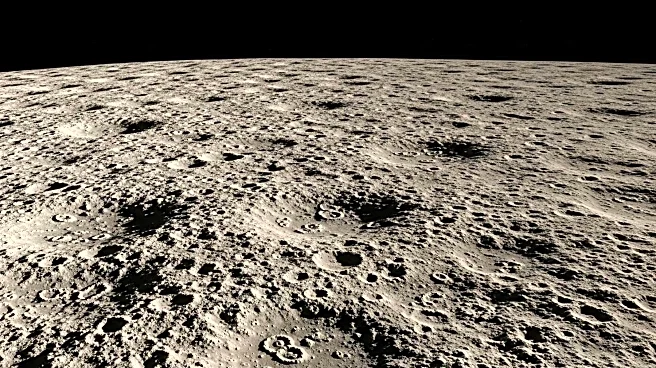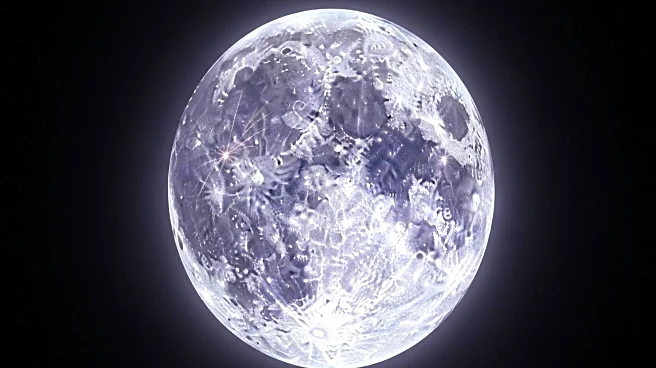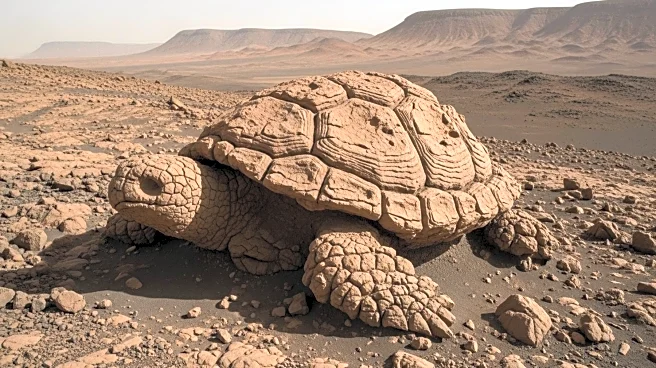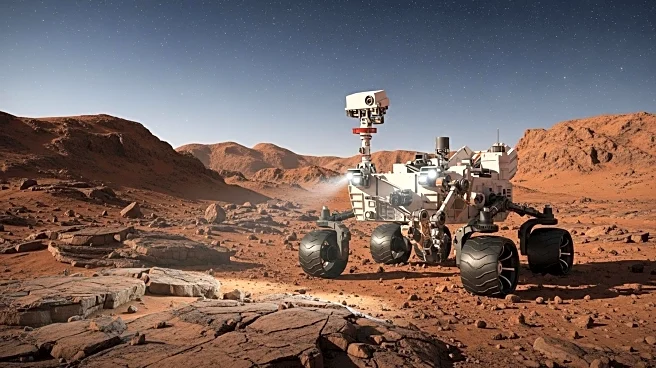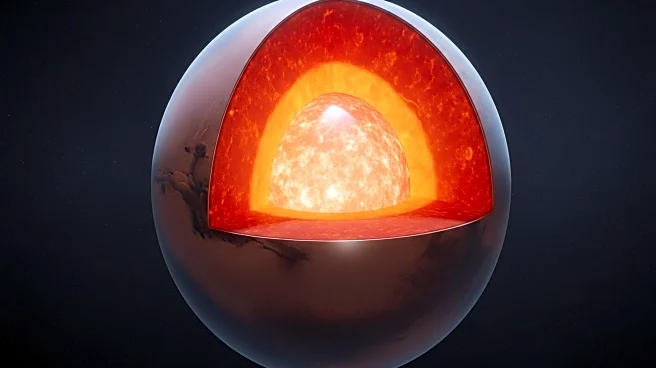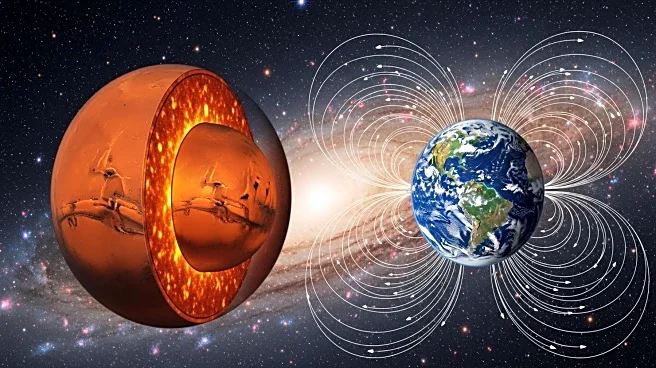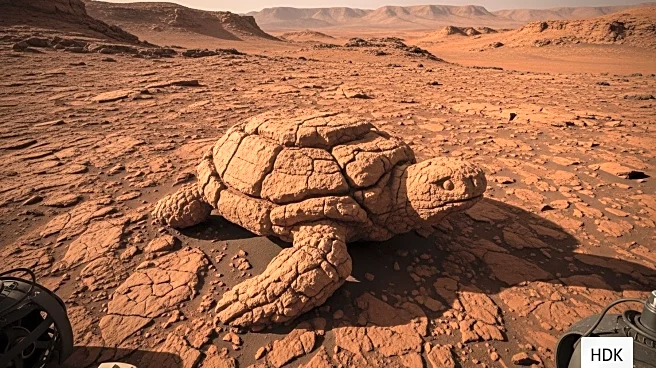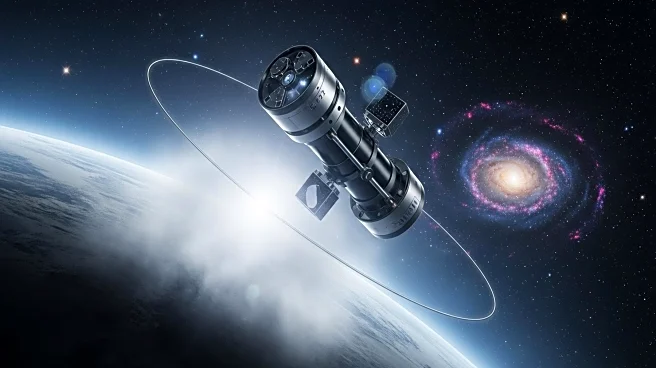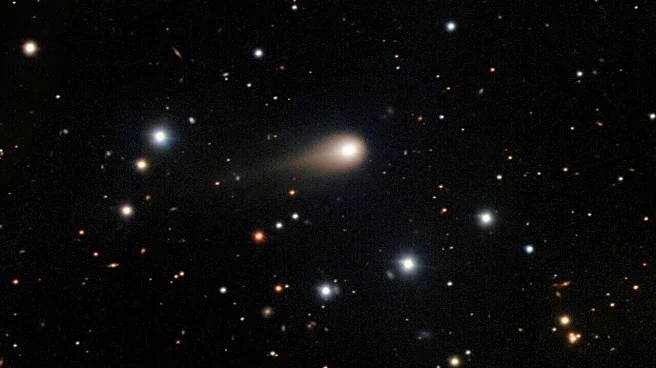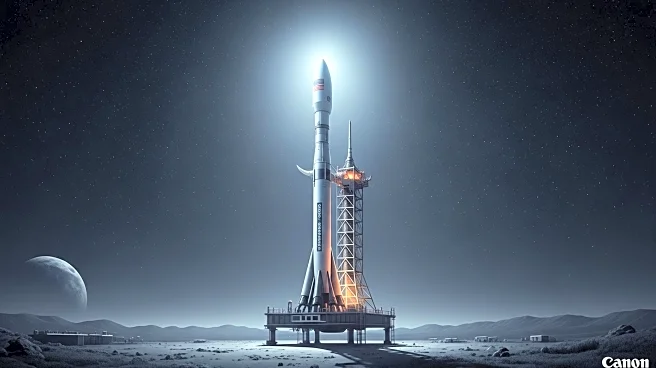What's Happening?
MIT scientists have proposed a new explanation for the moon's magnetic scars, suggesting they were caused by a combination of a weak ancient magnetic field and a plasma-generating impact. The study, published in Science Advances, used simulations to demonstrate how a large asteroid impact could have created a cloud of ionized particles that temporarily amplified the moon's weak magnetic field. This process likely occurred on the moon's far side, where highly magnetic rocks have been detected. The research provides insights into the moon's geological history and the presence of magnetism in lunar surface rocks.
Why It's Important?
Understanding the origin of the moon's magnetic scars is crucial for advancing knowledge in planetary science and astrophysics. The findings offer a plausible explanation for the moon's magnetism, which has puzzled scientists for decades. This research could influence future lunar exploration missions, particularly those targeting the moon's far side, where the magnetic anomalies are concentrated. The study also contributes to broader scientific discussions about planetary magnetic fields and their interactions with external forces, such as asteroid impacts, which can have significant implications for understanding other celestial bodies.
What's Next?
Future lunar missions, including NASA's Artemis program, may focus on sampling rocks from the moon's far side to test the hypothesis presented by MIT scientists. These missions could provide direct evidence of the impact-related magnetism and further validate the study's findings. Additionally, the research may inspire new investigations into the magnetic properties of other planets and moons, potentially leading to discoveries about their geological histories and the role of impacts in shaping their surfaces.
